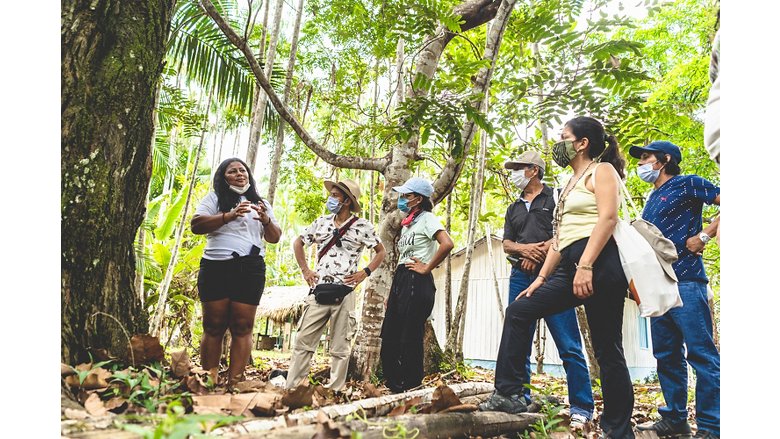As visitors arrive at the Caboclos House Ecolodge, just two hours away from the Amazon hub of Manaus, they bear witness to a complete transformation¨C from busy urban crowds to the hospitality of the local riverside culture immersed in the Amazon jungle. Guests can take workshops in handicrafts and gardening, sample traditional dishes, and observe wildlife and natural beauty.
These experiences are only possible in conserved areas that provide sustainable livelihood opportunities to local communities. CBST programs offer a scalable way to both increase conservation and economic development.
Led by traditional communities such as riverside dwellers, farmers, quilombolas and Indigenous Peoples, CBST offers an alternative option for tourists seeking a more authentic and sustainable experience. In the Amazon, these opportunities allow visitors to meet and learn from local communities while immersed in the natural environment, all while helping communities receive a green income and employment opportunities.
To expand and strengthen CBST in the Amazon, a group of 22 local entrepreneurs, community leaders, and government officials from Brazil, Colombia, and Peru got together to exchange knowledge about their CBST experiences in late 2021. The Community Tourism: Amazon Exchange was sponsored by the Amazon Sustainable Landscapes Program (ASL), which is led by the World Bank and funded by the Global Environment Facility (GEF), with the purpose of improving integrated landscape management and ecosystem conservation in priority areas of the Amazon.
The exchange was facilitated by , in partnership with the , the community-based tourism agency , and the .
As part of the learning journey, participants experienced a three-day immersion in the Amazonas Sustainable Development Reserve (RDS) of Rio Negro in Brazil, where they visited several CBST initiatives led by traditional communities and local entrepreneurs, while following all COVID-19 health protocols. Participants learned about different business models and observed firsthand how communities and entrepreneurs are implementing their initiatives. The sites visited included family owned , , and community associations and Nova Esperan?a.
The immersion was preceded by virtual meetings that included to improve understanding of CBST concepts and principles, its links with public policies and regional planning, and capacity building tools.



